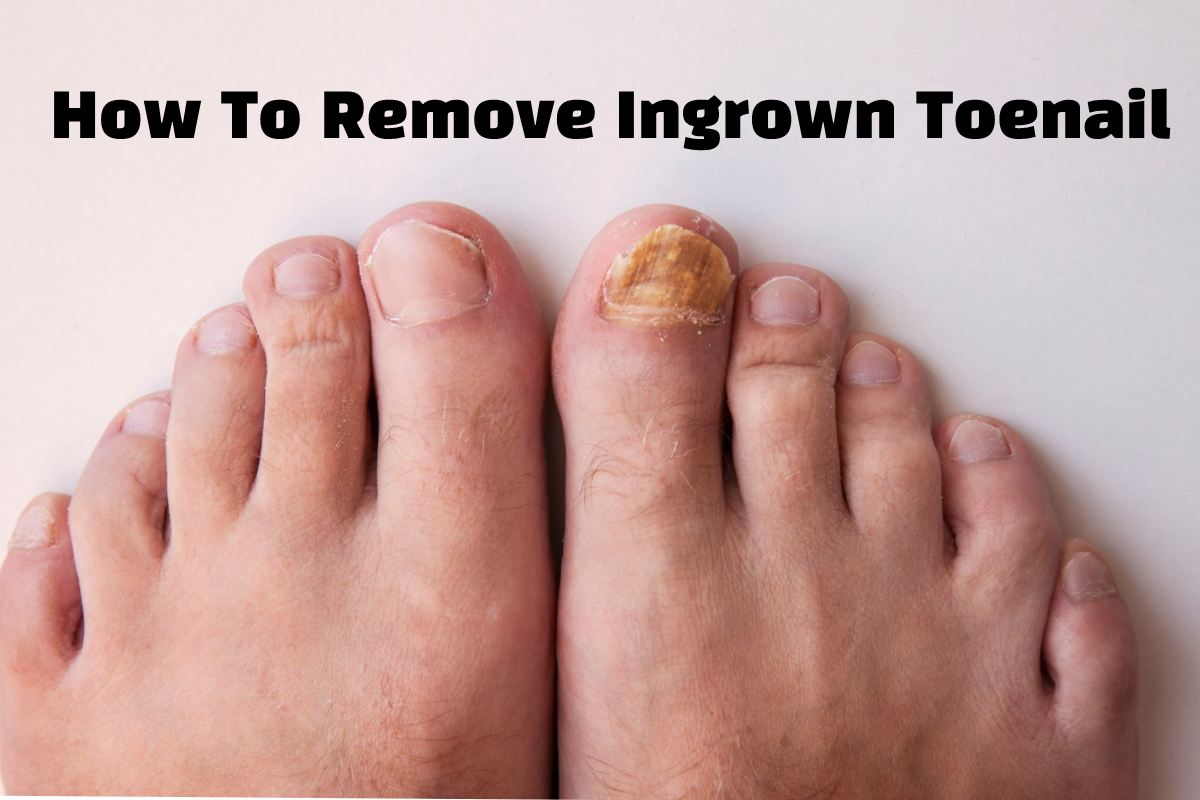How To Remove Ingrown Toenail : A slightly ingrown toenail can treat at home by trying to lift the corner of the nail and inserting a small piece of cotton or gauze so that the pin stops growing into the finger and ends up ingrown naturally.
However, sometimes these measures to treat ingrown toenails at home may not be enough, usually when the area around the nail is very red, swollen, or with pus, which may indicate infection at the site.
In this case, it is essential to consult a health professional, usually a dermatologist, who may indicate the application of an ointment containing antibiotics or even Surgery to relieve symptoms.
Table of Contents
How To Remove Ingrown Toenail
To treat a slightly ingrown and inflamed nail, you should follow the step-by-step procedure:
Soak Your Foot Or Hand In Warm Water
First, soak your foot or hand in warm or hot water for 10 to 20 minutes to make the nail more malleable and relieve pain.
Try To Keep The Ingrown Part Of The Nail Elevated
When the pin is more malleable, lift the ingrown corner with tweezers and place a piece of cotton or gauze between the nail and the skin to keep it elevated. It allows the nail to grow out of the skin and cut correctly.
Properly Clean The Place
Finally, an antiseptic solution, such as povidone-iodine, should be applied to the site to prevent the region from becoming infected.
What Not To Do
In case of an ingrown toenail, do not cut the part of the ingrown toenail; cut the nail in a “v,” nor apply a tight bandage. These measures only worsen the ingrown toenail and increase the risk of the ingrown again.
When To Go To The Doctor
It will recommend seeing a dermatologist in case of:
- Diabetes;
- Peripheral arterial disease;
- Blood clotting problems;
- Ingrown toenail persistence;
- Presence of swelling, redness, and pus;
- Difficulty Walking Due To Ingrown Toenail.
In addition, if the nail becomes ingrown very often or remains ingrown for a long time despite treatment, it is also essential to be evaluated by a dermatologist, as Surgery may be necessary.
Ingrown Toenail Treatment With Pus
Treatment of an ingrown toenail with pus usually involves Surgery and ointments containing antibiotics. Therefore, when the finger with the ingrown toenail has pus in addition to pain, redness, and swelling, it is essential to be evaluated by a dermatologist.
When Surgery will Indicate
Surgery for ingrown toenails is usually indicated in case of infection with pus, recurrence of the ingrown toenail, and when treatment with nail lifting or cutting is not enough to resolve the problem.
In this case, the Surgery will perform under local anesthesia; in most cases, removing the entire nail is unnecessary. In some cases, the doctor may still choose to apply an acid, such as silver nitrate, which destroys part of the nail that was ingrown, for example.
How To Prevent Nails From Getting Ingrown
Some measures to prevent ingrown toenails are:
- Avoid cutting your nails too rounded or short;
- I prefer looser shoes;
- Change socks daily;
- Perform foot hygiene properly.

